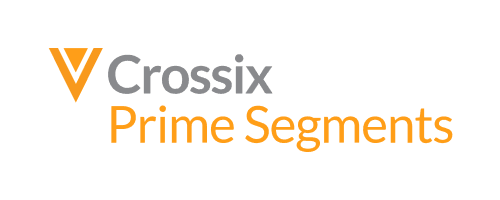Marketing in Rare Disease: Insights
from Alexion Pharmaceuticals,
Amgen, and Teva Pharmaceuticals
Rare disease marketers from Alexion Pharmaceuticals, Amgen, and Teva Pharmaceuticals share their experiences on successfully engaging and educating rare disease patient populations for better health outcomes.
From utilizing linear TV to working with patient advocacy groups, rare disease marketers are reaching patients with the information they need and messaging that resonates. A patient-centric approach develops trust, community, and connection to help these small patient populations and their caregivers learn more about conditions and point them to potential therapies.
Three rare disease marketers from Alexion Pharmaceuticals, Amgen, and Teva Pharmaceuticals share their experiences about how they are successfully engaging and educating rare disease patient populations for better health outcomes.
Establish trust with patients using a patient-centric approach
Having a rare disease is scary and also overwhelming. Patients and doctors often have limited awareness about the disease and the available treatments. “People go years before they get to the right doctor or the right diagnosis,” says Scott Fanelli, director, consumer marketing at Amgen. “We’re trying to accelerate that pathway.”
Patients need information quickly, but often they don’t know where to begin. Jen Clifford, director, patient marketing at Alexion Pharmaceuticals, says developing trust with the patient population is essential. Providing information is a big part of gaining that trust, and once you have it, patients look to you as an expert. “Our patient truly is our guiding star,” she says. “The patient perspective and voice must be carried through in every decision we make.”
Tap into communities and advocacy groups
Having a rare disease can also be isolating. When patients have a diagnosis, relating to others with the same condition is helpful. Patient communities and advocacy groups offer understanding, support, and connection to others going through the same. Fanelli and his team often tap into these groups. “It’s important that we speak to the consumers how they want to be spoken to,” he says.
His team uses rotating panels to review potential ads to ensure they are relevant, instill trust, and are informative yet not intrusive. “You want to communicate at a regular cadence, but you don’t want to over-communicate because once you alienate, it’s hard to get consumers back,” he says.
When Fanelli reviews web metrics, one of the top things people click on is commentary from those in the same situation. “Patients want to hear stories, and they want to hear relevance,” he says. Fanelli and his team again turn to the communities for help. “We ask who’s willing to tell their story, and we feature those regularly,” he says.
Raise awareness with smaller patient populations
When it comes to driving awareness, some rare disease marketers are successfully utilizing linear TV despite small patient populations. While this might seem counterintuitive, for newer launch brands – or those without competition in the market – linear TV provides an opportunity to reach a broad audience and drive awareness. “Some of our brands do a lot of linear TV,” says Fanelli. “We’re trying to create ground where there is very low awareness.”
With linear TV it can take time to see positive ROI so it’s important to set realistic expectations, especially for launch brands. Measuring linear TV campaign performance and leveraging benchmarks can help you identify optimizations and maximize the campaign’s effectiveness.
Fanelli and his team use Crossix TV data to understand the impact of their linear TV campaigns. “The Crossix data shows important insights, such as what day part distribution we might look to modify,” he says. “Using this information, we can change partnerships and media to get the right kind of impact.”
Alexion leverages linear TV in combination with other awareness channels. “We have a linear TV campaign where we’re driving a lot of brand awareness,” says Clifford. “But we also drive awareness through a number of other tactics such as social, search, display and through our patient communities where we know patients are going to find more information about their disease and treatment options.”
Target specific populations
While broad-reach channels are important in driving awareness, it’s critical to also reach your specific audience wherever they are consuming media. Leveraging health audience segments allows marketers to precisely target these smaller patient populations across publishers and channels. Precise audience segments such as Crossix Prime Segments allow advertisers to better reach patients throughout their treatment journey and improve media efficiency. Advertisers can build distinct segments for both patients and caregivers.
“With any drug, we’re always looking at our strategy and how we’re pulling that through to our highly focused patient audience and our segments,” says Clifford. “We are constantly thinking about what those segments are and how we will reach those patients.”
Nina DeLucia, director, consumer marketing at Teva agrees. “We work with partners like Crossix and our media agency to find relevant health audience segments to leverage.”
Connect marketing to health outcomes
Measuring campaign performance and its influence on actual health outcomes, like visiting a doctor or starting treatment, is especially important for rare disease brands. It is critical to drive patients to have the right conversations with doctors and speed up the path to diagnosis and treatment.
To understand success, DeLucia says her team looks at similar metrics for rare disease brands as they would for any other disease state. This includes leading indicators to ensure good audience quality and reach as well as channel performance. The team also looks at lagging indicators such as the impact on patient behaviors. This can help them see if their campaigns are increasing diagnosis and treatment and driving people to talk to their doctor about this disease state.
In addition to audience quality, Crossix helps Fanelli examine what actions patients take on their website and whether that is pushing them down the funnel to engagement.
“We rely on Crossix insights to help us look at each tactic and the health of our segmentations and audiences,” says Clifford. “I can take those integrated campaign insights to my leadership team and say, this is working, or here’s how we’re progressing towards those big goals.”
Rare disease marketing: Trust, community, and connection
When marketing a rare disease, you must put yourself in the patient’s shoes. Providing awareness and disease state education is essential in connecting and building trust with this audience. More precise audience targeting lets you connect with rare disease patients at different points of their journey and can be beneficial in getting them on treatment. Measuring the impact of all these marketing tactics allows you to optimize campaigns to reach the right patients and drive better outcomes for them.
Learn how precision targeting helped a rare disease biopharma improve campaign efficiency.



